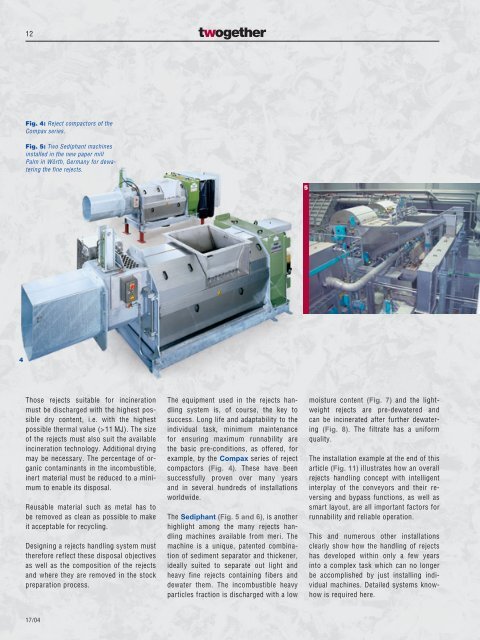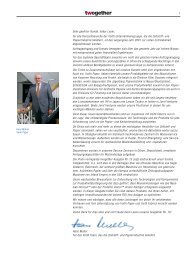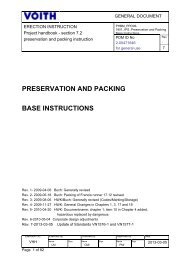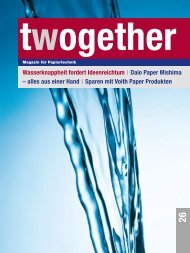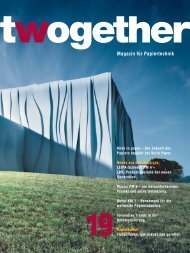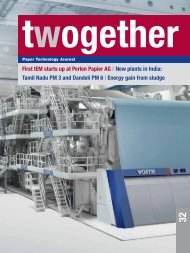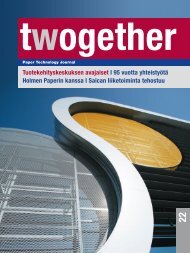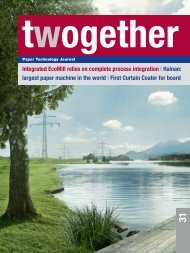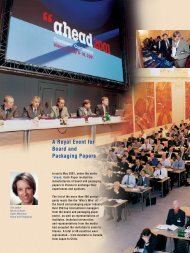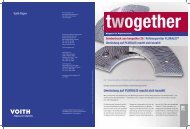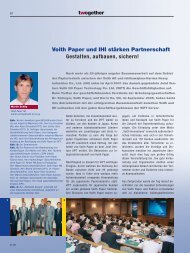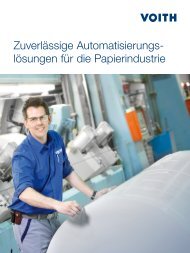You also want an ePaper? Increase the reach of your titles
YUMPU automatically turns print PDFs into web optimized ePapers that Google loves.
4<br />
12<br />
Fig. 4: Reject compactors of the<br />
Compax series.<br />
Fig. 5: Two Sediphant machines<br />
installed in the new paper mill<br />
Palm in Wörth, Germany for dewatering<br />
the fine rejects.<br />
Those rejects suitable for incineration<br />
must be discharged with the highest possible<br />
dry content, i.e. with the highest<br />
possible thermal value (>11 MJ). The size<br />
of the rejects must also suit the available<br />
incineration technology. Additional drying<br />
may be necessary. The percentage of organic<br />
contaminants in the incombustible,<br />
inert material must be reduced to a minimum<br />
to enable its disposal.<br />
Reusable material such as metal has to<br />
be removed as clean as possible to make<br />
it acceptable for recycling.<br />
Designing a rejects handling system must<br />
therefore reflect these disposal objectives<br />
as well as the composition of the rejects<br />
and where they are removed in the stock<br />
preparation process.<br />
<strong>17</strong>/04<br />
The equipment used in the rejects handling<br />
system is, of course, the key to<br />
success. Long life and adaptability to the<br />
individual task, minimum maintenance<br />
for ensuring maximum runnability are<br />
the basic pre-conditions, as offered, for<br />
example, by the Compax series of reject<br />
compactors (Fig. 4). These have been<br />
successfully proven over many years<br />
and in several hundreds of installations<br />
worldwide.<br />
The Sediphant (Fig. 5 and 6), is another<br />
highlight among the many rejects handling<br />
machines available from meri. The<br />
machine is a unique, patented combination<br />
of sediment separator and thickener,<br />
ideally suited to separate out light and<br />
heavy fine rejects containing fibers and<br />
dewater them. The incombustible heavy<br />
particles fraction is discharged with a low<br />
5<br />
moisture content (Fig. 7) and the lightweight<br />
rejects are pre-dewatered and<br />
can be incinerated after further dewatering<br />
(Fig. 8). The filtrate has a uniform<br />
quality.<br />
The installation example at the end of this<br />
article (Fig. 11) illustrates how an overall<br />
rejects handling concept with intelligent<br />
interplay of the conveyors and their reversing<br />
and bypass functions, as well as<br />
smart layout, are all important factors for<br />
runnability and reliable operation.<br />
This and numerous other installations<br />
clearly show how the handling of rejects<br />
has developed within only a few years<br />
into a complex task which can no longer<br />
be accomplished by just installing individual<br />
machines. Detailed systems knowhow<br />
is required here.


